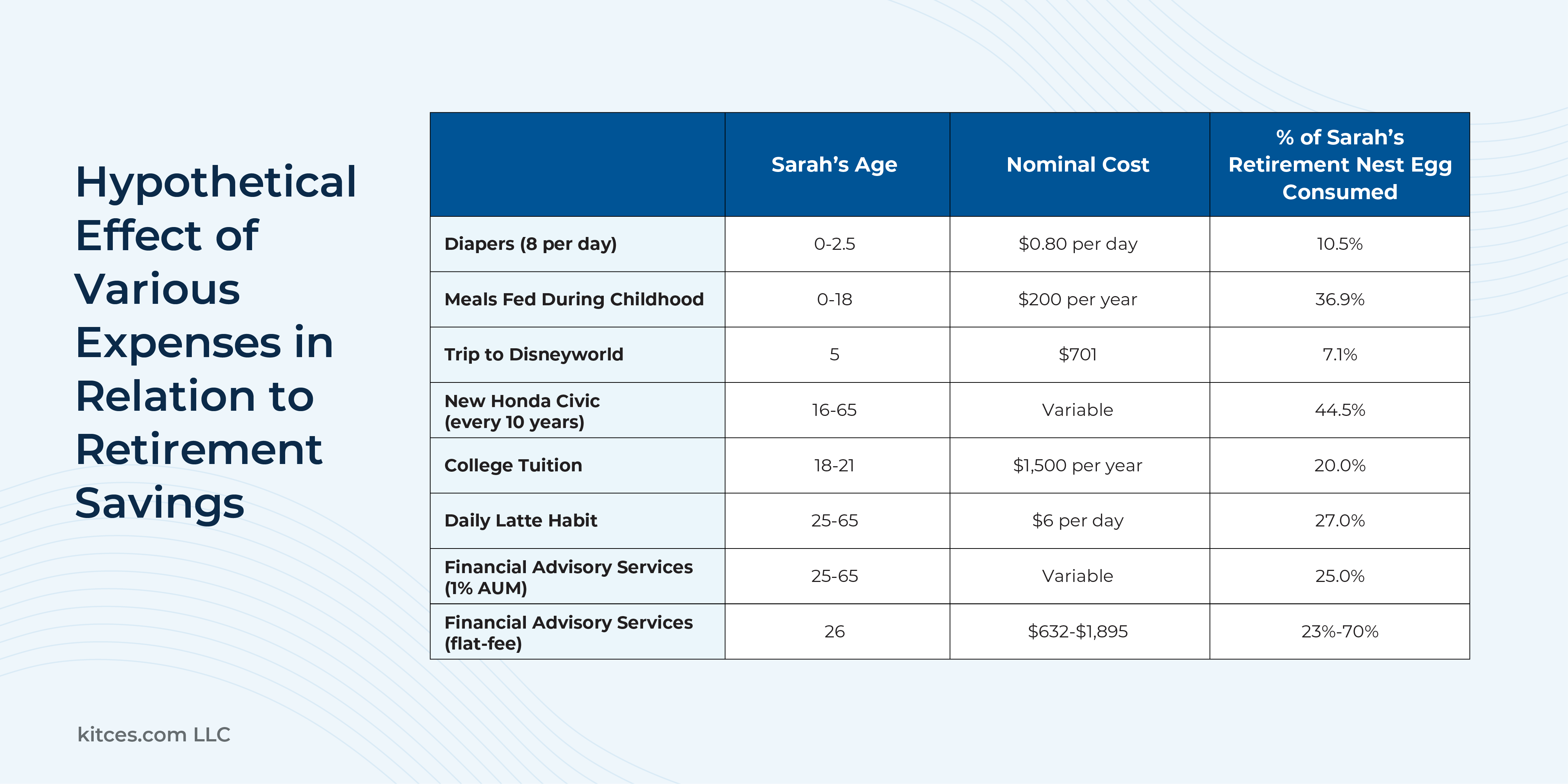While the financial advice industry has transformed in many ways over the past several decades, one aspect that has remained relatively constant is the use of the Assets Under Management (AUM) fee model as a common way for many advisors to get paid. Though in practice, while a 1% AUM fee is a common ‘starting point’ in the industry, the actual fee structure can vary based on the firm’s approach; for example, some firms may reduce the fee for high-net-worth clients, or charge an additional fee for separate and additional services (from deeper financial planning to add-ons like tax preparation).
However, over the years, the 1% AUM fee has faced criticism from those who argue that it reduces the value of a portfolio by more than the advisor’s guidance adds. This argument is particularly common in the financial independence and personal finance space, with financial educators like Ramit Sethi being a notable critic. AUM detractors like Sethi often present a calculation that compares the performance of 2 identical portfolios – one managed by an advisor who charges a 1% AUM fee for 20+ years, and one without an advisor – illustrating how the fee can significantly erode the cumulative value of their portfolio by the time they reach retirement.
With this line of criticism becoming increasingly common in online financial spaces, how can advisors with a 1% fee structure explain their value to curious (or critical) prospects? One key starting point is to acknowledge that technically, all spending reduces the total amount that a person could have saved and had available for retirement. And almost any ‘normal’ household expenditure can add up to a lot when it’s compounded out, at a market rate of return, for multiple decades. For example, buying a new Honda every 10 years, instead of saving those payments, may take a greater piece of a client’s retirement nest egg than a 1% advisory fee. So too does the impact of the infamous daily latte. Comparing expenses to what they could have been worth if saved in a portfolio can be misleading – because from that perspective, every expense seems unfavorable! And in practice, even flat-fee and subscription models of financial planning can still have a similar long-term impact on a consumer’s financial future, when only the advisor’s ongoing costs are considered.
Additionally, it’s worth noting that while Sethi and other financial influencers advocate against the 1% AUM fee, much of their criticism targets those who charge a percentage of AUM but focus more on selling products than on supporting a client’s long-term well-being, confounding financial salespeople with actual financial advisors. However, many consumers may not fully understand these nuances of the financial advice industry, and could mistakenly assume that all advisors charging AUM fees operate this way.
For prospects concerned about long-term AUM costs – and financial advisors exploring the benefits of a financial planning engagement with them – it may be helpful to highlight the value advisors provide beyond ‘just’ asset allocation. For example, firms that offer services like tax-loss harvesting, systematic rebalancing, and behavioral coaching often more than ‘earn’ their 1% AUM fee by saving clients money in taxes and other areas. Advisors who can explain their fee in the context of a holistic strategy – and connect it back to the pain points a client faces – can address these concerns before prospects become clients.
Ultimately, the key point is that while criticism of the 1% AUM fee may be widespread, and it’s fair to recognize that financial advice does have a cost that advisors should be expected to offset by the value they provide, advisors who lead with holistic financial planning have a lot of value to demonstrate, especially when engaged on an ongoing basis, to help prospects better understand the true costs and benefits of having a trusted financial advisor in their corner!


